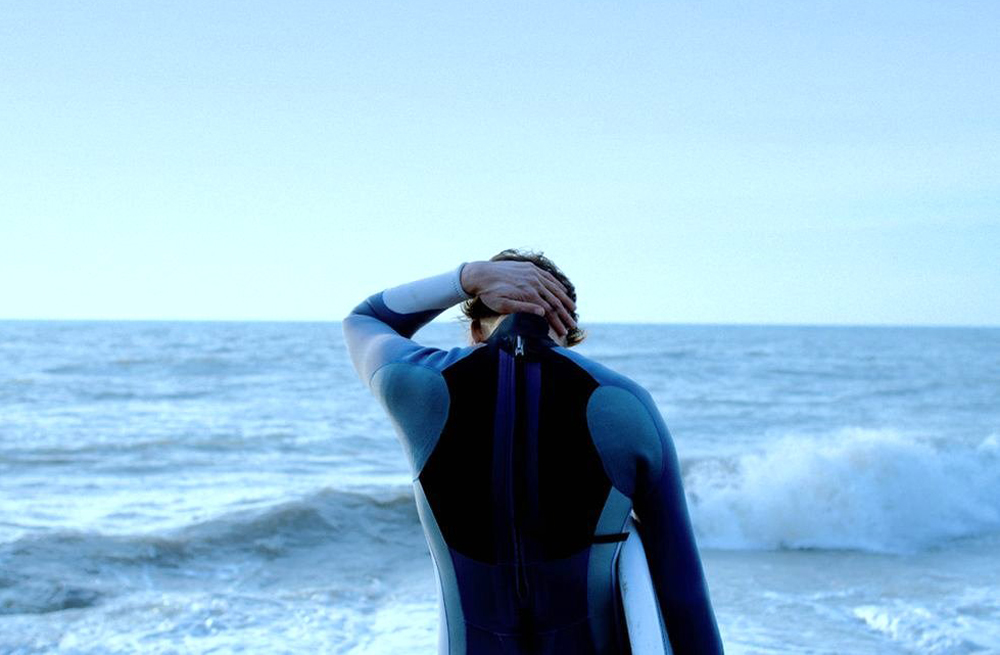One of the most breathtaking moments you will ever see in a film happens in Katell Quillévéré’s third feature “Heal the Living,” not long after you’ve met the sandy blond surfer Simon (Gabin Verdet). Introduced by sneaking into his girlfriend’s bedroom with the same acuity as he slides in and out of waves, it is unimaginable that anything could stop the teen. Yet when he drifts off driving home with the road taking on the contours of the ocean in his mind, he is overwhelmed, as is the audience, when he doesn’t wake up and through her haunting visuals, Quillévéré suggests Simon’s been left adrift at sea forever, with his parents (Emmanuelle Seigner and Kool Shen) contemplating what to do with his still-beating heart as his body lies limp in a hospital.
While Simon’s mind may no longer be active, Quillévéré uses her adaptation of Maylis De Kerangal’s novel to show how he remains ever-present for those who knew him and even some who don’t, such as the violinist Jeanne (Anne Dorval), who grapples with the responsibility of potentially accepting his heart as a transplant for hers. These thoughts are not necessarily what you may think, as medical staff taken with his young age begin to fantasize about the choices they haven’t made in life and the moments that stay with his girlfriend (Galatéa Bellugi) and others close to him are usually random and seemingly mundane, though collectively, they take hold, requiring great persistence to move forward.
Finding inner strength has been a theme of Quillévéré’s work so far, first in her provocative 2010 debut “Love Like Poison,” in which a teen girl already confused by her burgeoning sexuality is thrust into reevaluating her religious beliefs after falling in love for the first time, and then her 2013 drama “Susanne,” where a young mother has to relocate her son and rebuild their life after going to prison. But “Heal the Living” is her largest-scale film to date and she uses the space created by a larger ensemble and grander production values (notably a score from frequent Wes Anderson composer Alexandre Desplat) to emphasize the power of small gestures and the subtle ways we influence one another. It’s an immensely beautiful film, both in style and sentiment and shortly before it arrives on American shores after premiering at the Toronto Film Festival last fall, Quillévéré spoke about how she was moved to adapt someone else’s work for the first time, creating the film’s compelling nonlinear structure and how she had her actors observe a real heart surgery to understand their roles.

I was really very touched by the novel by Maylis De Kerangal because it really resonated with some personal experiences that I had in dealing with loss, particularly related to [being in] a hospital, so it affected me on that level, but I also found that it’s a really beautiful story because it really deals with resilience. I realized this idea is a thread through all of my previous films as well and I really wanted to show in this film that you are looking at how people are able to face death, to confront it, and then given that experience, to refocus and remake the path in their life and be inspired by that to perhaps choose a new path.
Usually, you have a strong central character to focus on. Was it interesting to write for an ensemble?
It was a challenge [because] what happened in my previous films I was working with a main character with a few secondary characters, so this whole different way of constructing it. It was a way for me to renew myself in my own work and I had to work with a strong team of actors, so it really became a collective film. it’s a film in a way in which at each stage, this torch of life is passed from one to another, almost in the sense of a relay.
But I love how the film doesn’t just move in one direction chronologically, but you move back and forth in time in a nonlinear fashion — was much of that there from the start or ideas you may have had during the editing?
The chronology of the story was there from the start. At one point, I thought about starting the film by focusing on Jeanne rather than with Simon and I realized that really would have been the wrong choice because by doing so, the emphasis would’ve been put on her receiving the heart, which meant automatically that someone would have to die to give the heart. I didn’t really feel this was the natural sense of what had to happen or whether it was really ethical to do it from that point of view. So I decided to begin it with the hero, which is basically the heart, and the chronology followed from there. It’s also a film also about the importance of chance in life [since] what happens is often by chance and it was very important to respect that in the chronology of the film.

It was more this element of contrasting the dramatic moments of the film with moments where the audience can catch their breath. It’s really something that was in my plan from the start, and achieving this kind of balance is something that’s very complex. It remains a challenge for us up until the end of the filming, something we were conscious of – this constant and permanent anticipation of how an audience will react, what will their emotional reaction will be at each and every second? Will they be moved or not in that particular scene? What was important is that in a film that is dealing with death and the chaos of life, it was also important to focus on the life aspects of the film. If you build a house, when you enter the house and you close the door, you have to open a window to allow the air to circulate, so it’s this idea of constant circulation that was important to achieve.
You’ve said you had your actors train with surgeons in order to perform the heart operation. Besides the accuracy of the procedure, did you learn anything dramatically that you could use from that research?
Yes, life is far more imaginative than sometimes we give it credit for being. We really need to find our sources for nourishment in what’s real and to use that when we’re making films. There’s a whole climate of the operating room and the doctors that was something that was very important for the film because when we actually did experience the real heart transplants, we were able to see how the professionals worked in their profession – what it entailed? What their gestures were? What was involved? So once we began the shooting, we were already emotionally immersed in what happens during that kind of situation, but also medically immersed because we knew how is the incision made, how is the heart removed, what are the gestures. So when the actors began shooting, they were already that much further ahead because they had actually seen it in practice.

Again, it was chance that was important here in film, as it is in life. [laughs] I sent Alexandre the script, like sending out a message in a bottle. I didn’t know what to expect or if he would have the time to do it. Fortunately, he really liked the script and he was interested in doing it. It was an incredible experience because I think what a composer in a film does in finding exactly the right melody is an amazing thing. What [Alexandre] does is he relates very closely to the actors – he accompanies them, but he also prolongs the emotion you feel with them. He shows the emotion or heightens the emotion so that you see it. And he’s almost like a heart machine — he just does it one after another.
“Heal the Living” opens on April 14th in Los Angeles at the Monica Film Center and in New York at the Quad Cinema.




